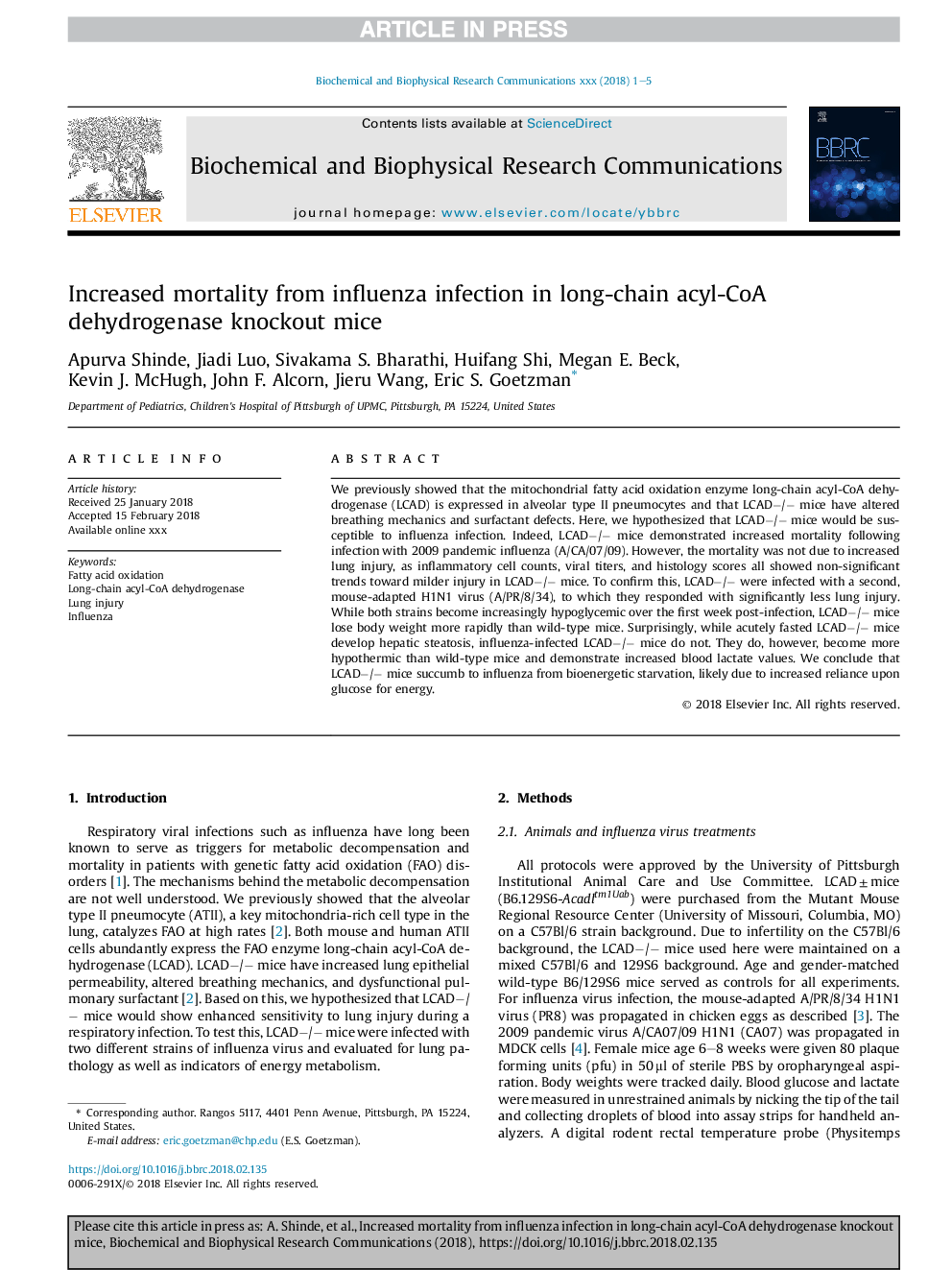| کد مقاله | کد نشریه | سال انتشار | مقاله انگلیسی | نسخه تمام متن |
|---|---|---|---|---|
| 8294065 | 1536750 | 2018 | 5 صفحه PDF | دانلود رایگان |
عنوان انگلیسی مقاله ISI
Increased mortality from influenza infection in long-chain acyl-CoA dehydrogenase knockout mice
ترجمه فارسی عنوان
افزایش مرگ و میر ناشی از عفونت آنفولانزا در موشهای نابالغ آکیل-کئوآاد دهیدروژناز طولانی مدت
دانلود مقاله + سفارش ترجمه
دانلود مقاله ISI انگلیسی
رایگان برای ایرانیان
کلمات کلیدی
اکسیداسیون اسید چرب، آکیل-کئوآ دی هیدروژناز زنجیره طولانی، آسیب ریه آنفلوانزا،
موضوعات مرتبط
علوم زیستی و بیوفناوری
بیوشیمی، ژنتیک و زیست شناسی مولکولی
زیست شیمی
چکیده انگلیسی
We previously showed that the mitochondrial fatty acid oxidation enzyme long-chain acyl-CoA dehydrogenase (LCAD) is expressed in alveolar type II pneumocytes and that LCADâ/â mice have altered breathing mechanics and surfactant defects. Here, we hypothesized that LCADâ/â mice would be susceptible to influenza infection. Indeed, LCADâ/â mice demonstrated increased mortality following infection with 2009 pandemic influenza (A/CA/07/09). However, the mortality was not due to increased lung injury, as inflammatory cell counts, viral titers, and histology scores all showed non-significant trends toward milder injury in LCADâ/â mice. To confirm this, LCADâ/â were infected with a second, mouse-adapted H1N1 virus (A/PR/8/34), to which they responded with significantly less lung injury. While both strains become increasingly hypoglycemic over the first week post-infection, LCADâ/â mice lose body weight more rapidly than wild-type mice. Surprisingly, while acutely fasted LCADâ/â mice develop hepatic steatosis, influenza-infected LCADâ/â mice do not. They do, however, become more hypothermic than wild-type mice and demonstrate increased blood lactate values. We conclude that LCADâ/â mice succumb to influenza from bioenergetic starvation, likely due to increased reliance upon glucose for energy.
ناشر
Database: Elsevier - ScienceDirect (ساینس دایرکت)
Journal: Biochemical and Biophysical Research Communications - Volume 497, Issue 2, 4 March 2018, Pages 700-704
Journal: Biochemical and Biophysical Research Communications - Volume 497, Issue 2, 4 March 2018, Pages 700-704
نویسندگان
Apurva Shinde, Jiadi Luo, Sivakama S. Bharathi, Huifang Shi, Megan E. Beck, Kevin J. McHugh, John F. Alcorn, Jieru Wang, Eric S. Goetzman,
